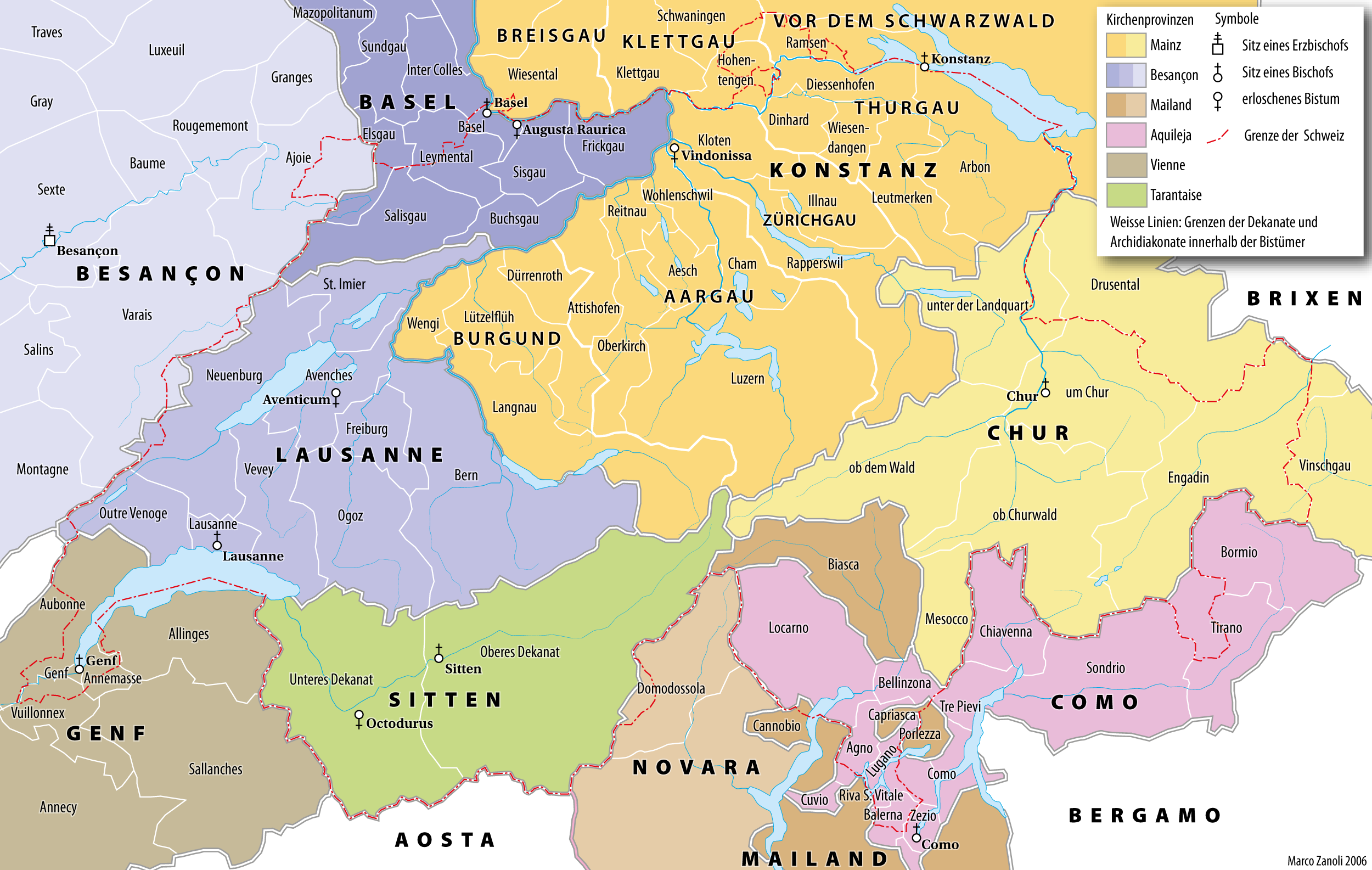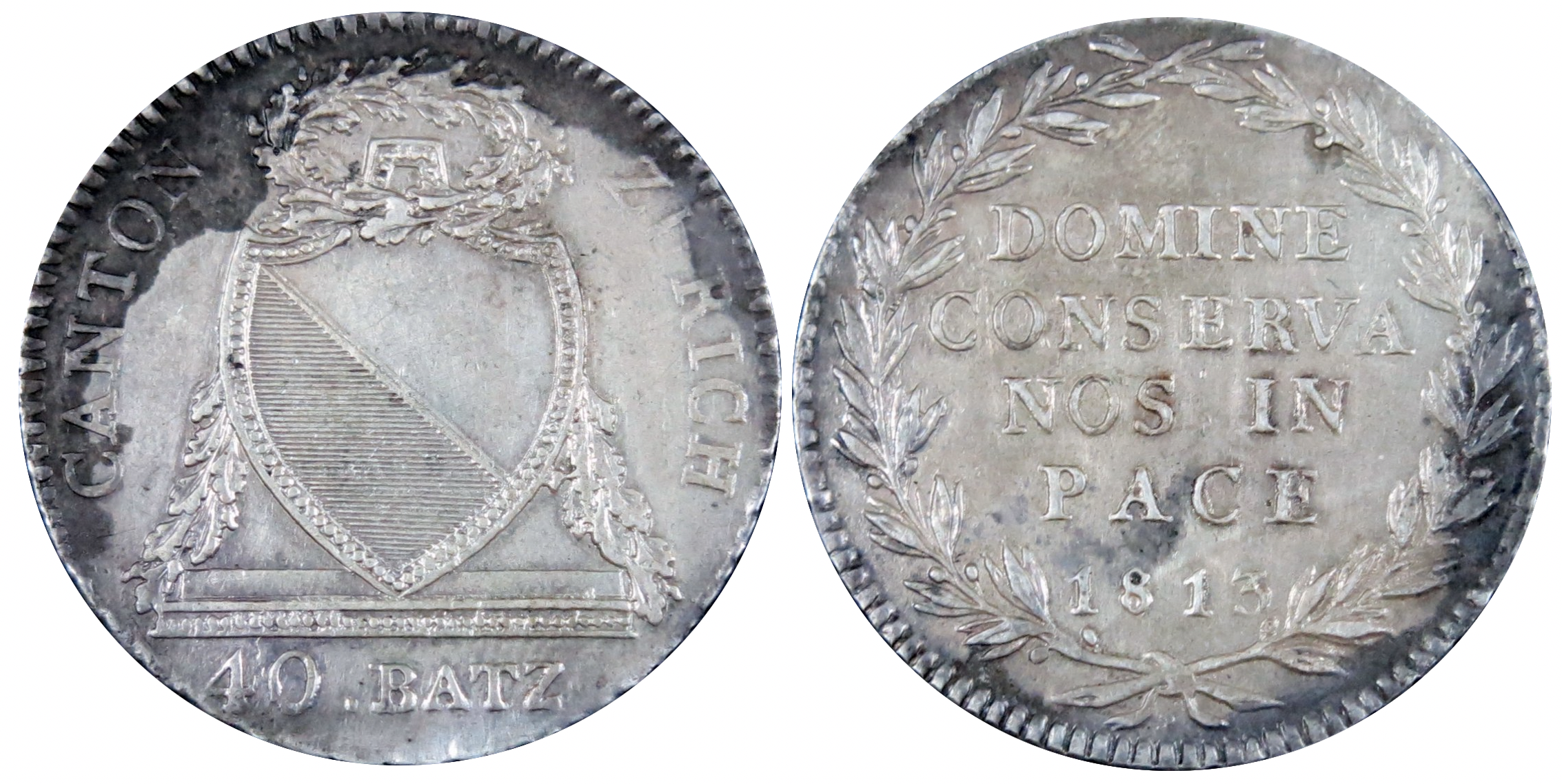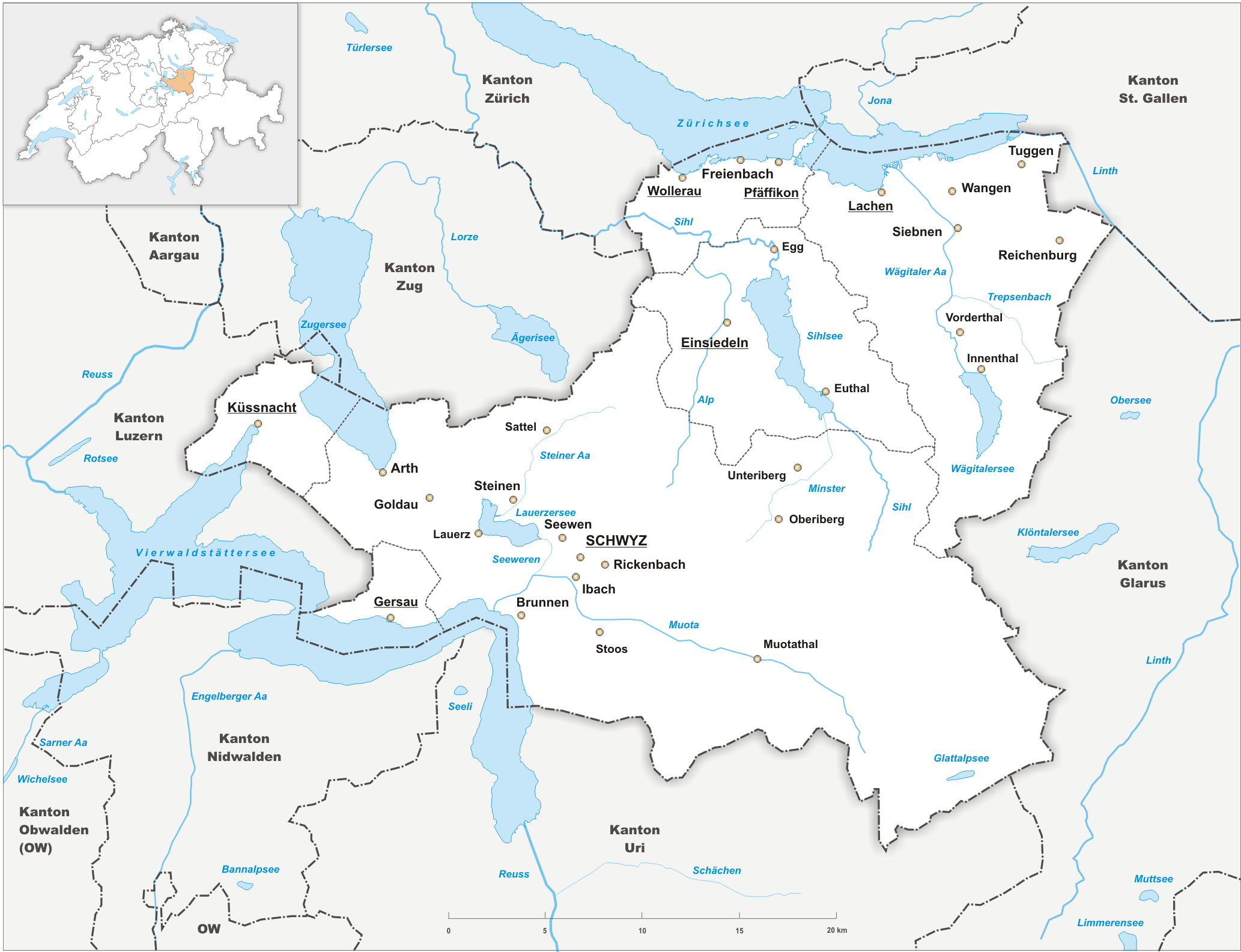|
Diocese Of Chur
The Diocese of Chur () is a Latin Church ecclesiastical territory or diocese of the Catholic Church in Switzerland. It extends over the Swiss Cantons of Graubünden (Grisons), Schwyz, Glarus, Zurich, Nidwalden, Obwalden, and Uri. The modern Catholic diocese must be distinguished from the historical Prince-Bishopric of Chur, a state of the Holy Roman Empire. History A Bishop of Chur is first mentioned in 451/ 452 when its Bishop Saint Asimo attended the Synod of Milan, but probably existed a century earlier. The see was at first suffragan to the Archbishop of Milan, but after the Treaty of Verdun (843), it became suffragan to Mainz. In consequence of political changes it became in 1803 immediately subject to the Holy See. According to local traditions, the first Bishop of Chur was Saint Lucius, who is said to have died a martyr at Chur around the year 176 and whose relics are preserved in the cathedral. St. Lucius is venerated as the principal patron of the diocese. The ... [...More Info...] [...Related Items...] OR: [Wikipedia] [Google] [Baidu] |
German Language
German (, ) is a West Germanic language in the Indo-European language family, mainly spoken in Western Europe, Western and Central Europe. It is the majority and Official language, official (or co-official) language in Germany, Austria, Switzerland, and Liechtenstein. It is also an official language of Luxembourg, German-speaking Community of Belgium, Belgium and the Italian autonomous province of South Tyrol, as well as a recognized national language in Namibia. There are also notable German-speaking communities in other parts of Europe, including: Poland (Upper Silesia), the Czech Republic (North Bohemia), Denmark (South Jutland County, North Schleswig), Slovakia (Krahule), Germans of Romania, Romania, Hungary (Sopron), and France (European Collectivity of Alsace, Alsace). Overseas, sizeable communities of German-speakers are found in the Americas. German is one of the global language system, major languages of the world, with nearly 80 million native speakers and over 130 mi ... [...More Info...] [...Related Items...] OR: [Wikipedia] [Google] [Baidu] |
Lucius Of Chur
Lucius of Chur (German: or ) is a legendary Swiss saint, priest and bishop. He was born in Britain or, more likely, in Prättigau, Switzerland, and died in the 5th or 6th century presumably in Chur, Prättigau. According to reliable sources, Lucius worked as missionary in Raetia around the St. Luzisteig Pass near Landquart; the pass is named after him. It is unlikely that he was appointed the first bishop of Chur and died as martyr. His sister is Saint . He is sometimes identified with Lucius of Britain. This is because he is often referred to as ('nobleman of the Pritanni'). However, here refers to tribe after which the region Prättigau was named, not to Britain. His feast is on 2 December, or for the Catholic Church The Catholic Church (), also known as the Roman Catholic Church, is the List of Christian denominations by number of members, largest Christian church, with 1.27 to 1.41 billion baptized Catholics Catholic Church by country, worldwid ..., o ... [...More Info...] [...Related Items...] OR: [Wikipedia] [Google] [Baidu] |
Holy Roman Empire
The Holy Roman Empire, also known as the Holy Roman Empire of the German Nation after 1512, was a polity in Central and Western Europe, usually headed by the Holy Roman Emperor. It developed in the Early Middle Ages, and lasted for a millennium until its Dissolution of the Holy Roman Empire, dissolution in 1806 during the Napoleonic Wars. For most of its history the Empire comprised the entirety of the modern countries of Germany, Czechia, Austria, the Netherlands, Belgium, Switzerland, Slovenia, and Luxembourg, most of north-central Italy, and large parts of modern-day east France and west Poland. On 25 December 800, Pope Leo III crowned the Frankish king Charlemagne Roman emperor, reviving the title more than three centuries after the fall of the Western Roman Empire in 476. The title lapsed in 924, but was revived in 962 when Otto I, OttoI was crowned emperor by Pope John XII, as Charlemagne's and the Carolingian Empire's successor. From 962 until the 12th century, the empire ... [...More Info...] [...Related Items...] OR: [Wikipedia] [Google] [Baidu] |
Prince-Bishopric Of Chur
The Prince-Bishopric of Chur () was an ecclesiastical principality of the Holy Roman Empire, and had Imperial immediacy. The Prince-Bishopric of Chur controlled contiguous land from the city of Chur, to Engadin, and to Vinschgau. The historical State must be distinguished from the Roman Catholic Diocese of Chur which still exists, even if the bishop was the same man. They were led by the League of God's House from the 15th century. The Three Leagues then took over any effective power from the Prince-Bishopric (while in Vinschgau the control passed to the Habsburg), and after the Reformation the bishop's estates remained the sole territory of the principality. The bishop had the vote number 51 in the Imperial Diet. History The Bishopric of Chur was first founded in 451, when Asinio was made Bishop of Chur. In 1170, Emperor Frederick I raised the Bishopric of Chur to the title of Prince-Bishopric of Chur. In October 1621, Colonel Baldiron of Austria attacked the Prince-Bishop ... [...More Info...] [...Related Items...] OR: [Wikipedia] [Google] [Baidu] |
Canton Of Uri
The canton of Uri ( ; ; ; ) is one of the cantons of switzerland, 26 cantons of Switzerland and a founding member of the Switzerland, Swiss Confederation. It is located in Central Switzerland. The canton's territory covers the valley of the Reuss (river), Reuss between the St. Gotthard Pass and Lake Lucerne. The official language of Uri is (the Swiss variety of Standard) Swiss Standard German, German, but the main spoken dialect is the Alemannic German, Alemannic Swiss German called . Uri was once the only canton whose children in school had to learn Italian as their first foreign language, but in the school year of 2005/2006, that was changed to English, as in other Central and Northeastern Swiss cantons. The canton's population is about 35,000, of which 3,046 (or 8.7%) are foreigners. The legendary William Tell is said to have hailed from Uri. The historical landmark Rütli lies within the canton of Uri. Name The name of the valley is first mentioned in the 8th or 9th century ... [...More Info...] [...Related Items...] OR: [Wikipedia] [Google] [Baidu] |
Canton Of Obwalden
Canton of Obwalden or Obwald ( ; ; ; ) is one of the Canton of Switzerland, 26 cantons forming the Switzerland, Swiss Confederation. It is composed of seven municipalities and the seat of the government and parliament is in Sarnen. It is traditionally considered a "half-canton", the other half being Nidwalden. Obwalden lies in Central Switzerland and contains the geographical centre of Switzerland. It is bordered by the canton of Canton of Lucerne, Lucerne to the north, the canton of Nidwalden and Canton of Uri, Uri to the east and the canton of Canton of Bern, Bern to the south. The canton is essentially in the valley of the Sarner Aa south of Lake Lucerne, with an exclave around Engelberg. It is one of the smallest cantons. The largest town is Sarnen, followed by Kerns, Switzerland, Kerns and Alpnach. Together with Nidwalden, Obwalden was part of the forest canton of Unterwalden, one of the three participants in the foundation of the Old Swiss Confederacy, named in the Pact of ... [...More Info...] [...Related Items...] OR: [Wikipedia] [Google] [Baidu] |
Canton Of Nidwalden
Canton of Nidwalden or Nidwald ( ; ; ; ) is one of the Canton of Switzerland, 26 cantons forming the Switzerland, Swiss Confederation. It is composed of eleven municipalities and the seat of the government and parliament is in Stans. It is traditionally considered a "half-canton", the other half being Obwalden. Nidwalden lies in Central Switzerland. It borders the canton of Obwalden to the west, the cantons of Canton of Lucerne, Lucerne and Canton of Schwyz, Schwyz to the north, the canton of Canton of Uri, Uri to the east and the canton of Canton of Bern, Bern to the south. The canton is essentially in the Alps, south of Lake Lucerne. It is one of the smallest cantons, the population is 40,287 (in 2007). The largest town is Stans, followed by Hergiswil and Buochs. Together with Obwalden, Nidwalden was part of the forest canton of Unterwalden, one of the three participants in the foundation of the Old Swiss Confederacy, named in the Pact of Brunnen of 1315 with Uri and Schwyz. ... [...More Info...] [...Related Items...] OR: [Wikipedia] [Google] [Baidu] |
Canton Of Zurich
The canton of Zurich is an administrative unit (Swiss canton, canton) of Switzerland, situated in the northeastern part of the country. With a population of (as of ), it is the most populous canton of Switzerland. Zurich is the ''de facto'' Capital city, capital of the canton, but is not specifically mentioned in the constitution. The Languages of Switzerland, official language is German language, German. The local Swiss German dialect, called ''Züritüütsch'', is commonly spoken. The canton has the highest Human Development Index score (0.994) List of subnational entities with the highest and lowest Human Development Index#Regions with the highest and lowest HDI, out of 1,790 subnational regions as of 2022. It is also a global Financial centre, financial center and has the List of Swiss cantons by GRP, fourth-highest GRP in Switzerland behind Basel-Stadt, Canton of Zug, Zug and Geneva canton, Geneva by GDP per capita. History Early history The prehistoric pile dwellings ... [...More Info...] [...Related Items...] OR: [Wikipedia] [Google] [Baidu] |
Canton Of Glarus
The canton of Glarus ( ; ; ; ) is a cantons of Switzerland, canton in east-central Switzerland. The capital is Glarus. The population speaks a variety of Alemannic German. The majority of the population (81%) identifies as Christianity in Switzerland, Christian, about evenly split between Swiss Reformed Church, Protestants and Roman Catholicism in Switzerland, Catholics. History According to legend, the inhabitants of the Linth Valley were converted to Christianity in the 6th century by the Hiberno-Scottish mission, Irish monk Fridolin of Säckingen, Saint Fridolin, the founder of Säckingen Abbey in what is now the Germany, German state of Baden-Württemberg. From the 9th century, the area around Glarus was owned by Säckingen Abbey, the town of Glarus being recorded as ''Clarona''. The Alemanni began to settle in the valley in the early 8th century. The Alemannic German language took hold only gradually and was dominant by the 11th century. By 1288, the Habsburgs had claimed ... [...More Info...] [...Related Items...] OR: [Wikipedia] [Google] [Baidu] |
Canton Of Schwyz
The canton of Schwyz ( ; ; ; ) is a Cantons of Switzerland, canton in central Switzerland between the Swiss Alps, Alps in the south, Lake Lucerne to the west and Lake Zürich in the north, centred on and named after the town of Schwyz. It is one of the founding cantons of Switzerland; Switzerland's name is derived from the name of the canton, and the flag of Switzerland from its coat of arms. For the history of the name, see Schwyz. The Swiss Federal Charter is on display in Schwyz. Northeast of the town of Schwyz is Einsiedeln Abbey. History Prehistory to the Roman era The earliest traces of humans in Schwyz are from the Upper Paleolithic and Early Mesolithic, or about 12,500 BC. An excavation of the karst caves in the valley of the Muota river (''Muotatal'') revealed numerous sites, some dating to the Younger Dryas period (). The alpine meadows at Bödmeren, Twärenen and Silberen were Stone Age hunter-gatherer camps. Ibex and red deer bones, along with charcoal, indicate tha ... [...More Info...] [...Related Items...] OR: [Wikipedia] [Google] [Baidu] |
Cantons Of Switzerland
The 26 cantons of Switzerland are the Federated state, member states of the Switzerland, Swiss Confederation. The nucleus of the Swiss Confederacy in the form of the first three confederate allies used to be referred to as the . Two important periods in the development of the Old Swiss Confederacy are summarized by the terms ('Eight Cantons'; from 1353 to 1481) and ('Thirteen Cantons', from 1513 to 1798).rendered "the 'confederacy of eight'" and "the 'Thirteen-Canton Confederation'", respectively, in: Each canton of the Old Swiss Confederacy, formerly also ('lieu/locality', from before 1450), or ('estate', from ), was a fully sovereignty, sovereign state with its own border controls, army, and currency from at least the Treaty of Westphalia (1648) until the establishment of the Swiss federal state in 1848, with a brief period of centralised government during the Helvetic Republic (1798–1803). The term has been widely used since the 19th century. "" The number of canton ... [...More Info...] [...Related Items...] OR: [Wikipedia] [Google] [Baidu] |
Diocese
In Ecclesiastical polity, church governance, a diocese or bishopric is the ecclesiastical district under the jurisdiction of a bishop. History In the later organization of the Roman Empire, the increasingly subdivided Roman province, provinces were administratively associated in a larger unit, the Roman diocese, diocese (Latin ''dioecesis'', from the Greek language, Greek term διοίκησις, meaning "administration"). Christianity was given legal status in 313 with the Edict of Milan. Churches began to organize themselves into Roman diocese, dioceses based on the Roman diocese, civil dioceses, not on the larger regional imperial districts. These dioceses were often smaller than the Roman province, provinces. Christianity was declared the Empire's State church of the Roman Empire, official religion by Theodosius I in 380. Constantine the Great, Constantine I in 318 gave litigants the right to have court cases transferred from the civil courts to the bishops. This situa ... [...More Info...] [...Related Items...] OR: [Wikipedia] [Google] [Baidu] |










